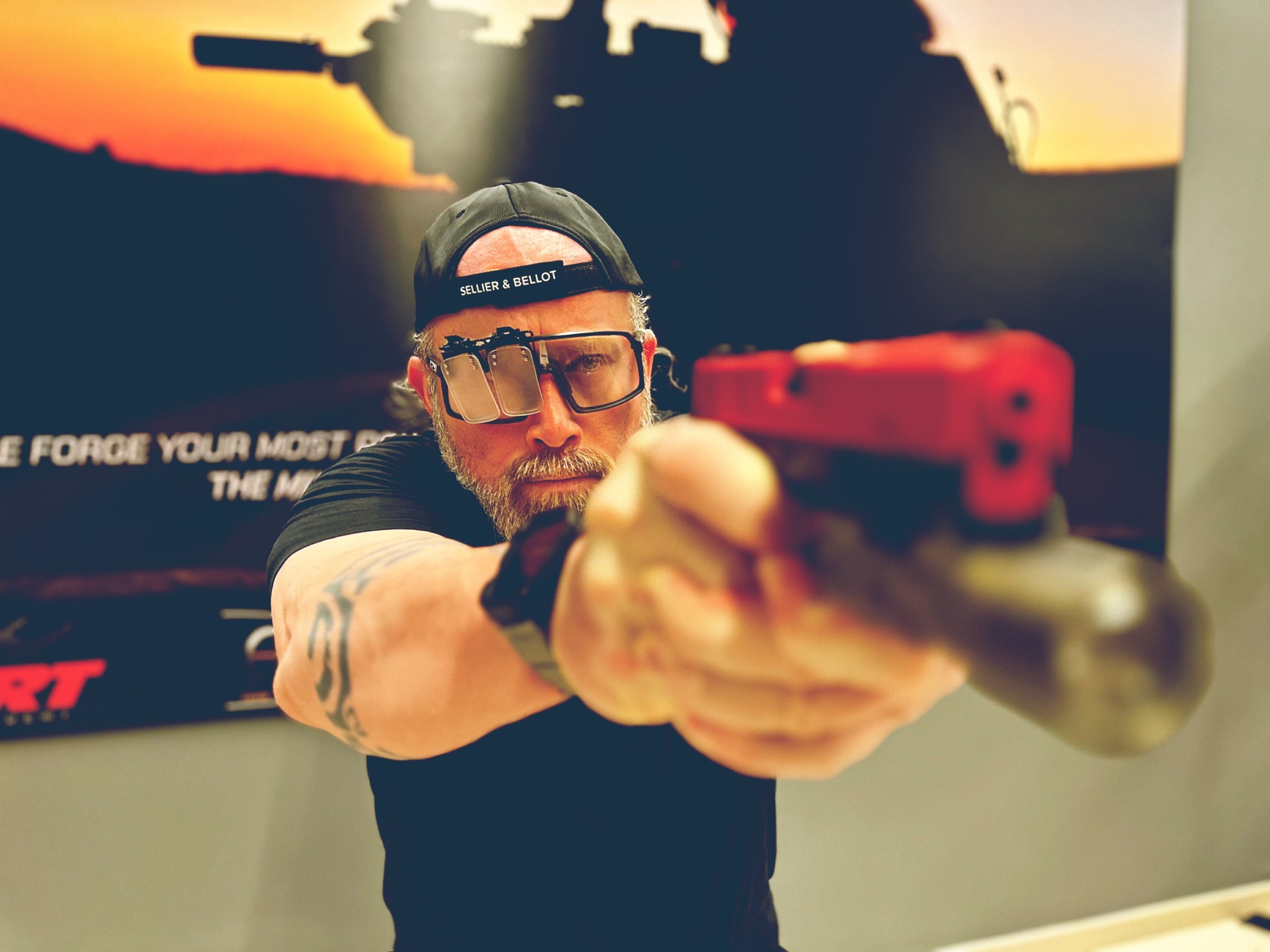THE FOCUS AND ITS CONDITIONS
Let’s start by saying when we talk about Focus or focal conditions we are not referring to any visual deficits or the problems that these can create, but to the natural ability that our brain has through the eyes, to focus and correlate one or more elements within our field of view at variable distances.
This, in addition to being a completely subjective ability and therefore variable from subject to subject, if translated into the field of shooting can generate some specific conditions that obviously go beyond those that are the visual abilities that we apply in everyday life.
When we talk about shooting with a firearm in fact, we are talking about the correlation between four fundamental elements: shooter, weapon, target, environment.
As said and explained several times, these four elements give rise to 3 absolute interactions, the FOCUS is inserted in the second one, that is, between the binomial Shooter – Firearm and the third element, the Target.
If we were to analyze the role of focus in shooting with firearm excluding long-range shooting platforms that usually use specific optical instruments, we would apparently find ourselves analyzing the correlation between our eyes, the sights (whatever they are) and the target.
However, this would not be complete true and correct, in fact, as like the sight which in addition to being our main sense, with 83% of interaction with the environment, also determines, plans and improves our movement, also in this case the focus and its conditions massively influence the biomechanics of shooting and in general the functional movement that is required of us especially during the dynamic phase.
To understand better, an individual, even without any visual deficit, could have difficulty focusing on an element common to the two visual fields or putting more than one element in focal correlation.
One of the most common mistakes made by Trainers when they provide training is to underestimate or treat focal conditions using “tricks”. This can somehow alleviate the problems that arise from them, but this, in addition to being just a mere palliative, will create deep scars and will contribute to increasing the extent of the problem, until we reach the point where there will be no more useful “tricks” and we will find ourselves having to face the harsh reality, when by then it may be too late to change it.
Focal Conditions related to the Hangun can be grouped into 4 main types:
MILD DOMINANCE: Natural tendency to align the firearm to the dominant eye. This is the basic condition, the one that includes the greatest number of subjects, it is not a problematic condition, it does not involve distortions or contractions of the facial muscles, it requires both eyes open. However, this condition can change for various factors and pass to the next one, the Marked one. Especially for male subjects with the advancement of age they could find theirself one day having their focal condition changed into a negative and more complex one. This means that to maintain this condition and to prevent a deterioration of our focus, we should apply the 8-2 cycle, that is, every 8 regular training sessions and with both eyes open, two should be done wearing the normal protective glasses that are used at the shooting range but with the lens of the dominant eye covered (you can use anything that does not damage the lens and does not touch the eye that must remain open under the glasses ).
This serves not only to strengthen the non-dominant eye, preventing it from becoming “weak”, but also to reduce as much as possible the gap between the two eyes, which is the main reason for the mutation of our focal condition.
MARKED DOMINANCE: Tendency to align the firearm on the dominant eye and at the same time the need to close the opposite eye. For those who have this condition, this is the only way to avoid suffering from a focal split when you have to correlate 2 or more elements present in the field of vision, as in the case of the front sight and the target or when applying complete trigonomy: rear sight ( Not Focus ), front sight
( Focus ) and target ( Focus/Not focus it depends on conditions and if a Red Dot) .
This is a condition that creates serious problems, such as the loss of 50% of the FOV ( Field Of View ) combined with a reduction of the peripheral vision of the FOV of the open eye (dominant). Also it can create damage at multiple levels and so when possible should be resolved. By applying targeted Focal training and a specific Neurovisulal training it resolves at
90-95%.
MILD CROSS DOMINANCE: This is a condition that occurs when the dominant hand/side and the dominant eye are opposite, for example dominant right hand dominant left eye or vice versa. This condition is quite easily detected during the focal analysis that should be done by every Professional trainer, as it involves the external rotation of the head depending on which eye is dominant. This, in addition to creating problems similar to the previous one, alters the biomechanics of the stance and movement, this means that both in the static and dynamic phases we will have a significant alteration of our reference axes. This is a condition that must be resolved but here the work is more consistent and the chances of success are lower than the previous one. However, there are tools that can be useful both in the application phase and in training. Neurovisual and Focus training work is absolutely important and it is essential that it is done with extreme competence.
MARKED CROSS DOMINANCE: As with the previous one, this is also a condition that occurs when the dominant hand/side and the dominant eye are opposite, for example dominant right hand dominant left eye or vice versa. The difference with the MILD one, however, is that this time it is no longer enough to vary the axis of the head to reduce the disturbance of one of the two eyes, this time the head is almost completely rotated outwards or in some more serious cases even, the subject rotates the head and closes the non-dominant eye. This type of dominance creates damage to all systems and on every work level, especially with the passage of time.
This of the four is certainly the most serious and also the most difficult to correct, however even in this case with adequate Neurovisual training and enormous Focal work on the part of the subject it can be resolved or at least reduced.
Don’t underestimate your focal conditions, don’t trust those who offer you “tricks” they do it because they obviously don’t know the subject enough, don’t trust those who tell you that they don’t count for anything because you have no idea how fundamental visual skills in general but especially in this field are. Be careful not to confuse or get lost in the fact that at close ranges you don’t have the time or the way to use the sights and therefore the focus is a relative problem, because it doesn’t work like that.
Train hard but train smart !



